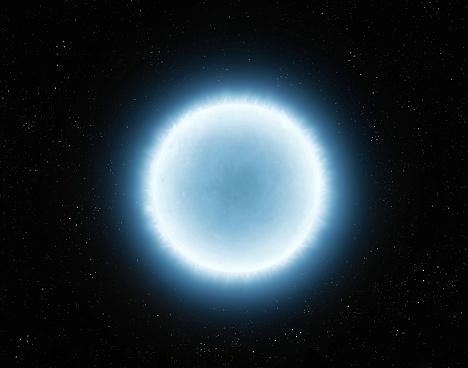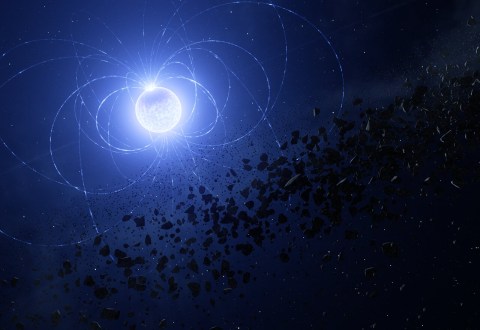When stars die, they transform into cannibals, and there is one white dwarf out there that has been left scarred by its victim.
Stars want to end their lives on a high note when they pass away. While stars can die in a variety of ways, when a star the size of our Sun dies, it explodes in the sky, ejecting light and heat while engulfing nearby planets and asteroids that were born with it.
Astronomers have now observed the effects of this on a specific star, which has a metallic scar where it consumed a victim.
The discovery refutes a long-standing hypothesis of exploding stars, which maintained that the material they absorbed would be distributed uniformly on their surface.
Stars are basically massive nuclear reactors. When they run out of fuel, after millions or even billions or years, the outer layer of the star collapse in on themselves.
In some stars, the massive weight of those layers pressing into the core drives the pressure and temperature sky rocketing.

This then drives the outside layers of the star back outwards, but well beyond its original size. It balloons out into its solar system, eating anything in its path. (Yes, our sun will engulf the Earth one day, but not for about another five million years.)
Eventually, the star cools, shrinks, and becomes what is known as a white dwarf.
Using the Very Large Telescope (VLT) in Chile, researchers have pinpointed exactly where one particular star ate one particular planet thanks to the metallic scar left on its surface.
The cannibal, white dwarf WD 0816-310, was once a star like our sun, and the scar shows the last remnants of an Earth-sized object.
‘Surprisingly, the material was not evenly mixed over the surface of the star, as predicted by theory,’ said co-author John Landstreet, a professor at Western University, Canada. ‘Instead, this scar is a concentrated patch of planetary material, held in place by the same magnetic field that has guided the infalling fragments.
‘Nothing like this has been seen before.’
Co-author Dr Jay Farihi added: ‘We have demonstrated that these metals originate from a planetary fragment as large as or possibly larger than Vesta, which is about 500 kilometres across and the second-largest asteroid in the solar system.’
To discover this rare find, the team used a ‘Swiss-army knife’ instrument that let them detect the metal scar and connect it to the star’s magnetic field, as well as relying on archival data from the VLT’s X-shooter.
This unique study also reveals how planetary systems can remain dynamically active, even after ‘death’.





